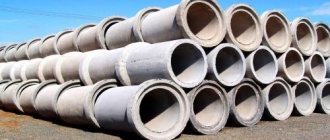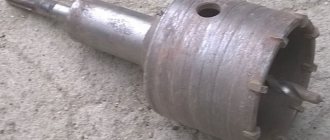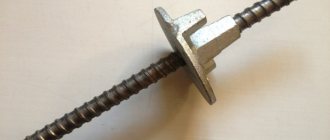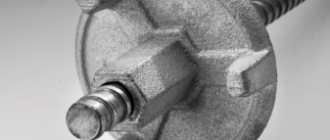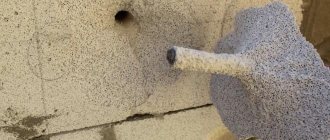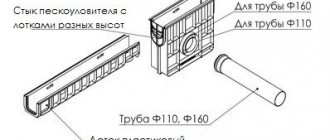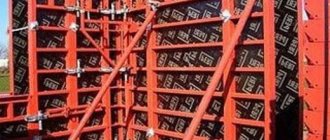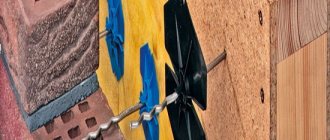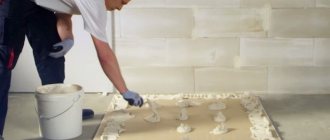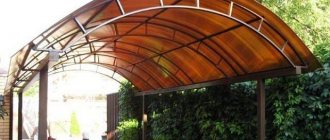GOST 1839-80
Group Zh21
OKP 57 8630
Date of introduction 1982-01-01
1. DEVELOPED AND INTRODUCED by the Ministry of Construction Materials Industry of the USSR
DEVELOPERS
I.N.Ioramashvili, Ph.D. tech. Sciences (topic leader); N.I.Zelvyanskaya; E.M. Kudryakova; L.M.Leibengrub
2. APPROVED AND ENTERED INTO EFFECT by Resolution of the State Construction Committee dated June 25, 1980 N 94
Change No. 3. Adopted by the Interstate Scientific and Technical Commission for Standardization, Technical Regulation and Certification in Construction
The following voted for adoption:
| State name | Name of the state construction management body |
| Republic of Belarus | Ministry of Construction and Architecture of the Republic of Belarus |
| The Republic of Kazakhstan | Ministry of Construction of the Republic of Kazakhstan |
| Kyrgyz Republic | Gosstroy of the Kyrgyz Republic |
| The Republic of Moldova | Ministry of Architecture and Construction of the Republic of Moldova |
| Russian Federation | Ministry of Construction of Russia |
| The Republic of Uzbekistan | State Committee for Architecture and Construction of the Republic of Uzbekistan |
| Ukraine | State Committee for Urban Development of Ukraine |
3. INSTEAD GOST 1839-72
4. REFERENCE REGULATIVE AND TECHNICAL DOCUMENTS
5. REISSUE (November 1997) with Amendments No. 1, 2, 3, approved in April 1987, August 1990, August 1996 (IUS 12-87, 12-90, 12-96)
This standard applies to asbestos-cement pipes and couplings for them, intended for the installation of external pipelines of free-flow sewerage, drainage collectors of reclamation systems and laying telephone cables.
Characteristics of asbestos-cement pipes
Anti-advertising against asbestos has done its job. Building materials made from asbestos components began to leave the market, but this did not affect asbestos-cement pipes.
Because these products have a fairly wide list of advantages, and they are also made from white asbestos - chrysotile, which, as scientists have proven, is not dangerous to human health.
The raw material for the production of asbestos-cement pipes is fiber cement mortar, which contains asbestos fibers in a volume of 15-20% of the volume of Portland cement used.
The production of pipes is not very complicated, which affects the cost of production. Therefore, the price of asbestos-cement pipes is several times less than that of metal ones.
Materials used in manufacturing
The main materials used in manufacturing are cement and asbestos fiber. To obtain asbestos fiber, asbestos is first crushed. The resulting powdery mass is divided into fibers and added to the cement mortar.
The amount of fibers in the solution does not exceed 15% of the total weight, but this results in a material with low weight and low thermal conductivity. Reinforcing concrete mortar with asbestos makes it possible to obtain a material with a strength that is 40% greater than that of conventional concrete products.
Asbestos pipes
Advantages and disadvantages of asbestos-cement pipes
Any pipe material is subject to fairly strict standards that determine the quality of the product. Therefore, the advantages of asbestos cement pipes include:
- Long-term operation, where manufacturers provide a guaranteed service life of 25 years.
- They cope well with low temperatures, so their installation in the ground at a shallow depth does not reduce their technical and operational characteristics.
- Can withstand positive temperatures up to +115 C.
- A smooth inner surface that prevents silt from settling on it, similar to plastic pipes.
- The hydraulic resistance is very small.
- Resistant to corrosion.
- Loyalty to almost all chemically active substances means absolute inertia.
- Simplicity of the installation process, where an asbestos-cement coupling is used to connect individual pipes and sections.
- The specific gravity of the products is small, so when laying pipes of small diameter there is no need to use special equipment; installation can be done by yourself.
- Wide range of models in terms of sizes.
- Acceptable price.
Of the shortcomings, only one point can be highlighted. According to established standards, asbestos-cement pipes cannot be used for laying water pipes in residential buildings, hospitals, and children's institutions.
They can only be used for supplying process water. It should be noted that today in Europe asbestos-cement pipes are used for laying gas pipelines. This type of pipe has found its main application in laying cable products as a protective tunnel, ensuring the safe operation of cables and wires.
Composition of asbestos cement
It is the composition that determines the basic properties of products. The pipes are formed from a mixture of cement binder and asbestos fibers, which act as a reinforcing frame.
Asbestos is a mineral fiber that is not afraid of heat or dampness. For this reason, asbestos cement pipes are universal; they are made into non-pressure and pressure pipes, designed for service under different conditions of temperature and humidity.
Along with asbestos, chrysolite (a type of asbestos) is added to cement.
The difference between chrysotile cement pipes and asbestos cement pipes lies solely in their environmental friendliness and safety. Asbestos is a more harmful component - it can cause allergic reactions, and with prolonged contact provokes cancer. Chrysolite does not have such an effect, but it is also more expensive. Nevertheless, there is no need to be alarmed: in practice, unpleasant consequences are excluded, because the highways are buried in the ground, that is, contact with humans is excluded.
Scope of application of asbestos cement pipes
Some areas where asbestos cement works can be used have already been mentioned, but this is just a small part. They are used:
- Drainage sewerage. Manufacturers currently offer perforated asbestos-cement products, which are used to collect and remove groundwater and atmospheric precipitation from suburban areas.
- Sewage systems: pressure and non-pressure. This is especially true for pressure sewerage, because asbestos-cement pipes can withstand pressure of up to 15 atm. Therefore, there is no need to install cast iron or steel pipes, which are several times more expensive than asbestos-cement pipes.
- Casing structure for drilling wells and finishing wells.
- The regulations allow the construction of garbage chutes in apartment buildings. This reduces building construction costs.
- Low thermal conductivity and large thickness of asbestos pipes make it possible to use them in chimney structures. At the same time, fire safety requirements are met one hundred percent.
- They are used to construct fences and various fencing structures as pillars.
- They are used to make permanent formwork for pouring columnar foundations and support pillars for floors.
- Designers also pay attention to asbestos-cement pipes. Flowerpots, flower beds, decorative stands, and so on are made from them. Fortunately, these products are easy to process, and this is another advantage.
Classification of asbestos cement pipes
The production of asbestos products is regulated by GOST 539-80 (pressure) and GOST 1839-80 (non-pressure), which determine that asbestos-cement pipes can be produced with a diameter of 100 mm to 500 mm, and their length has 2 standard sizes: 3.95 and 5 m.
Pressure
Asbestos-cement pressure pipes are classified according to the pressure of the medium passing inside them. They are divided into 4 classes:
- VT6 – can withstand pressure up to 6 kgf/cm², which is almost 6 atm. To connect such products, a coupling of the CAM6 brand is used.
- VT9 – maintain a pressure of 9 atm, a SAM9 brand coupling is used.
- VT12 – 12 atm, coupling SAM12.
- VT15 – 15 atm, coupling SAM15.
The indicated pressure is the maximum provided that there is no external pressure on the pipeline.
Pressure asbestos-cement pipes are divided into 3 more types, which are based on the internal diameter and length of the product. We will not analyze all the proposed options; we will consider only one with a nominal bore of 200 mm, which will show the difference.
First type:
| Brand of asbestos cement pipe | Inner diameter, mm | Wall thickness, mm | Length, m |
| VT6 | 196 | 14 | 3,95 |
| VT9 | 189 | 17,5 | 3,95 |
| VT12 | 181 | 21,5 | 3,95 |
| VT15 | – | – | – |
Second type:
| Brand of asbestos cement pipe | Inner diameter, mm | Wall thickness, mm | Length, m |
| VT6 | 200 | 12 | 5,0 |
| VT9 | 196 | 14 | 5,0 |
| VT12 | 188 | 18 | 5,0 |
| VT15 | 180 | 22 | 5,0 |
Third type:
| Brand of asbestos cement pipe | Inner diameter, mm | Wall thickness, mm | Length, m |
| VT6 | 196 | 14 | 5,95 |
| VT9 | 189 | 17,5 | 5,95 |
| VT12 | 181 | 21,5 | 5,95 |
| VT15 | 176 | 24 | 5,95 |
Please note that the pressure versions have a machined chamfer to fit into the coupling. It is smaller in outer diameter. The length of the chamfer should not be less than 20 cm.
Gravity
This type of pipe does not have a seat chamfer, i.e. they are purely straight. As in the previous case, asbestos products are divided by size. True, the range is not so large.
- Conditional pass: 100; 150; 200; 300 and 400 mm.
- Wall thickness respectively: 9; 10; eleven; 14 and 17 mm.
- Length: the first two diameters have two indicators: 2.95 and 3.95 m, the last three have only 3.95 m.
GOST 1839-80
Asbestos cement pipes are used to transport liquid working media by gravity. The diameters of asbestos-cement pipes are measured in millimeters, as is the wall thickness.
The exact characteristics and permissible areas of use of certain brands are regulated by GOST 1839-80.
Requirements that non-pressure asbestos pipes must meet:
- Ability to withstand pressure up to 4-6 atmospheres (the exact indicator depends on the class of the product)
- Resistance to longitudinal compression - pressure level is determined by diameter
- Homogeneity of the structure of the material itself – absence of delaminations, cracks, chips
- Exact compliance of the geometric dimensions of the product with the values specified in the passport documentation
When choosing a pipe, you need to focus on the parameters presented in the table:
During installation, pipes are laid using special couplings. In addition to installing various systems with gravity-flowing liquids, pipes can be used in the following way: gutters are made from BNT 100 pipes sawn along the axis, decorative fences, pillars, columns, flower beds are made, and they are chosen for the construction of chimneys.
Installation of asbestos-cement pipes
The main criterion for the strength of an asbestos-cement pipe is the asbestos fibers that are distributed along the pipe structure. This unique reinforcing frame creates a strong and reliable structure of the material.
That is why shaped products (fittings) are not made from asbestos cement, except for the coupling, which follows the shape of the pipe. Essentially, this is a pipe section. The thing is that asbestos fibers in the fittings will be arranged chaotically, and this will reduce the strength several times.
Therefore, when assembling pipelines in a straight circuit, it is the coupling that is used. If there is a need to make a pipeline branch at different angles or to connect an additional line, then in this case fittings made of metals are used.
So, an asbestos cement coupling is a pipe section in which grooves are made from the inside on each side. They contain a rubber seal. The cross-section of the seal is not round, but complex, which makes it possible to achieve maximum sealing of the joints. Therefore, seals are often called cuffs.
Installing the pipe into the coupling is simple. It is necessary to insert the coupling into the pipe with little effort or vice versa. In this case, it is recommended to leave a small radial gap of 3°, which will ensure bending of the connected pipe during elastic deformations.
For example, when the ground moves. By the way, this technology of the installation process with the installation of a gap makes it possible to do without the use of temperature compensators. If pipes of large diameter are connected to each other, the coupling is installed using special devices.
How to do it right:
- A coupling is placed in the trench near the first pipe.
- Rubber cuffs are inserted into it.
- The coupling is put on the pipe and, using levers and jacks, is pulled onto the latter until it stops.
- A second pipe is laid nearby so that its end is pressed against the end of the coupling.
- Now the coupling is moved back to the end of the second pipe using the same tools and devices. It is important not to overdo it here, so carefully determine the possibility of movement so as not to weaken the tightness of the structure.
It is very important that the elements being connected are on the same axis; this guarantees the quality of the final result. Be sure to keep an eye on the cuffs so they don't twist or move.
There is another option for connecting asbestos-cement pipes, where a polyethylene coupling is used. The latter is heated before installation and put on one of the pipes until it stops, which is located inside the connecting element.
Then a second pipe is inserted on the other side. If the coupling has cooled down before installing the second pipeline element, then part of it can be reheated. When cooling, the polyethylene shrinks, the coupling decreases in size, which leads to its tight fit to the outer surfaces of the connected parts of the pipeline.
Non-pressure asbestos-cement pipes, which are used to protect cable networks laid in wet soils, are connected differently.
- To do this, holes with a diameter of 2 cm are drilled in the coupling on both sides. In this case, there should be two holes on each side, located on opposite sides of the diameter.
- Tarred rags or tape are wrapped around the pipes.
- The coupling is pulled onto one pipe.
- Then a second one is installed next to it, onto which the connecting element is shifted in the reverse order.
- The tarred materials are compacted.
- Now liquid hot bitumen must be poured into the drilled holes, while it is poured into the upper hole and controlled at the bottom. As soon as bitumen flows out of it, it means that the cavity between the coupling and the pipe is completely filled.
Repair of asbestos-cement pipes
In principle, their technology is exactly the same as that of their cast iron counterparts. The simplest option is to apply a rubber band, which is secured with wire or clamps. You can also use a bandage soaked in a cement mixture for this. However, you will have to wait until the lining dries.
If the location of the defect is critical or material is moving inside the pipeline under pressure, then the best option is to dismantle part of the pipeline and install a new section. Fortunately, asbestos-cement pipes are easy to process. You can trim them, for example, with a regular hacksaw.
As you can see, asbestos-cement pipes have not yet given up their positions. This is especially true in areas where strict fire safety requirements must be taken into account. Let us add that these products are by far the cheapest option with decent technical characteristics.
Areas of application of asbestos-cement pipes, new products with high performance characteristics. Video:
Source: otrubah.com
Terms of use
Asbestos cement is a fragile material that, if technology is violated, can crack and fall apart. When using parts, adhere to the requirements of SNiP. There are general recommendations to help you work safely with raw materials.
How to cut
Asbestos-cement pipes are produced in different sizes, but if necessary, the structure can be divided. During cutting, hazardous dust rises into the air. To minimize harm, performers must perform operations wearing protective respirators and goggles.
If you need to make a hole in a pipe, then an electric drill with a Pobedite bit is sufficient. When using conventional metal drills, the tools quickly become dull. The tip allows you to drill holes with a diameter of 10-12 mm. For holes from 12 cm, diamond or carbide models are used. The equipment is placed in shockless mode, otherwise the surface will burst.
The easiest way to cut the material is with a grinder. The tool works with products of different diameters and wall thicknesses, and the high speed of rotation of the diamond wheel will protect against chips and cracks. If you use a circular saw, then install a disk with carbide parts. One person should cut, and the second should water the cut area with water. The liquid minimizes the formation of hazardous dust.
Working with an angle grinder Source truby-moskva.ru
Gravity asbestos pipe
The product is manufactured using special technology taking into account standard sizes. The areas of application of non-pressure asbestos pipes are different. They are widely used in non-pressure sewerage without the possibility of building a pressure sewer system.
At the same time, the cost of construction is significantly reduced. For manholes, cut asbestos rings are an excellent option.
They are also used as a garbage disposal. It is important to note that asbestos pipes do not pollute the environment, because the material is resistant to microorganisms. If the pipeline is switched off for a long time and the wastewater stagnates, there is no chance that the soil can become infected through the pipes.
Free-flow asbestos pipes are widely used as a shaft for various types of communications - telephone lines, electrical cables, because they do not conduct electricity. For the same reason, they are not subject to electrochemical corrosion that occurs when exposed to stray currents.
Polyethylene couplings designed for connecting pipelines are easy to install, ensuring strength and reliability of fastening. Some varieties are used to create heating mains in various systems.
They are an economical way to transport heat, as they have very low thermal conductivity, thereby minimizing heat losses. In such a system, inexpensive hydrophobized gravel is used as a heat insulator, which is used to fill the pipes, and is additionally covered with a polymer material in the form of a film.
Free-flow asbestos pipes are excellent for installing heating and plumbing systems, ventilation, chimneys, and storm sewers, where large-diameter pipes are used as a water collector, and smaller-diameter pipes are used as drainage drains.
The use of non-pressure asbestos pipes in the construction of a drainage system
Non-pressure asbestos pipes are used to create a closed drainage system. Installation is carried out taking into account the following aspects:
- Pipes intended for drainage must have holes for free penetration of water.
- As a rule, drainage pipelines are located at a slope towards the water flow.
- To install the system, you need to dig a trench manually or using special equipment.
- In the drainage system, pipes with a diameter of 1-2 cm are usually installed, but in cases where high performance is needed, it is possible to install products with a diameter of 3-4 cm.
- The products are also installed as wells serving the drainage system. The pipeline can be installed quite deep underground, since its walls can withstand environmental influences and do not require regular maintenance.
The service life of asbestos-cement pipes is about 30 years.
Asbestos pressure pipe
The pressure type has a straight, clearly cylindrical or bell-shaped shape.
The product is produced in standard formats. The production of such products is carried out strictly in accordance with established standards. The process occurs in stages and with the obligatory conditioning of products in special steaming chambers in order to increase their strength by 70-75% in comparison with the initial properties. Asbestos pressure pipes have a high degree of strength and durability. They also have low hydraulic resistance.
They are used in gas pipelines, pressure water pipelines, sewerage, pressure irrigation and other similar systems. In addition, they are used to create wells, wells, agricultural feeders, ceilings of structures, and even as home decoration.
Pressure asbestos pipes are attached to each other with heat-resistant couplings and rubber seals. Due to the ability of the coupling to self-seal under the influence of pressure in the pipeline, absolute tightness of the connections is ensured. The absence of weak welded joints is another advantage of these products.
Installation and installation
Cement pipes are installed and assembled in different ways - it all depends on the scope of use, operating conditions and functions of the pipeline.
Couplings for connection: connection methods
In industrial plumbing systems, double-breasted couplings and asbestos cement are used, which must exactly match the pressure and diameter of the pipes. The connection is ensured by the part and the rubber O-ring. The characteristics of such couplings are often presented in tables with the parameters of different brands of pipes.
Elements in non-pressure systems are connected with chrysolite-cement couplings, which are made in the form of sections of thick-walled pipe of the required diameter. In the installation of gas and water pipelines, cast iron flange couplings of the “Zhibo” type are also actively used.
When creating a communication cable channel, free-flow pipes are mounted together with polyethylene couplings of the MPT type. Suitable for products with a diameter of 100-300 millimeters when laid in dry, normal soil.
Requirements for any type of connection:
- High strength and density under vacuum and under certain pressure
- Speed and ease of installation
- Resistance to various aggressive environments
Pros and cons of pipes
Among the main advantages of asbestos-cement pipes it is worth noting: low cost, strength, long service life, low hydraulic resistance, resistance to mid-range temperatures, the possibility of installation in open ground, resistance to corrosion, ease and speed of installation, a large selection of sizes.
The disadvantages include: insufficient heat capacity for powerful traction, ability to absorb condensate, heavy substances from gases, inability to use at temperatures above +300C, inability to clean due to the lack of hatches.
Asbestos-cement pipe is a popular product that is suitable for many tasks in the construction industry. Due to certain advantages and disadvantages, it is worth understanding that all properties of a pipeline depend on whether the pipe is suitable for a particular task. If the correct calculations are made and the product is adequately selected, the installed pipeline will be durable and of high quality.
Advantages and disadvantages of asbestos pipes
Asbestos-cement pipes have a number of advantages. They are quite easy to install, they are reliable and strong, are not exposed to aggressive environmental influences and can be located deep underground without the need for replacement.
In addition to these properties, they have a relatively long service life than metal pipes. For example, metal products that are not resistant to corrosion require repair measures within 5-10 years, because under the influence of corrosion formations arise and the internal diameter narrows, which causes a decrease in the pressure of water circulating through the pipes, and also reducing the rate of heat.
Periodic cleaning does not solve the problem, because the rust accumulated on the walls inside the pipes is not removed and after some time again affects the throughput of the system, reducing water pressure.
Asbestos modification copes very well with this problem. Over time, it becomes stronger and stronger. This is due to the ability of asbestos to not corrode in an aquatic environment and become stronger due to the hydration of Portland cement.
In addition, the inner surface of asbestos pipes is not subject to overgrowing under the influence of water flow, so the initial water pressure is ensured for many years.
So, asbestos pipes have the following advantages:
- absolute inertness to the adverse effects of corrosion, including corrosion as a result of exposure to stray currents, since asbestos is a dielectric;
- a wide range of various sizes and relatively low cost;
- resistance to elevated temperatures – products can withstand temperatures up to 2000C;
- slight linear expansion when heated;
- non-flammable, asbestos pipes are fireproof;
- frost resistance, when water passing through pipes freezes, the products are not damaged;
- simple machining and easy installation using couplings;
- low hydraulic resistance due to the smoothness of the internal walls;
- absence of overgrowing, due to which asbestos pipes maintain the throughput capacity of the system throughout operation.
However, in addition to all the advantages of asbestos pipes, there are also some disadvantages:
- their use is not allowed in systems where there is a temperature above 3000C; under the influence of such a high temperature, pipes can crack;
- when using asbestos pipes as a chimney that removes combustion products, they become covered with soot from the inside and absorb condensate;
- as a result of the low thermal conductivity of asbestos, low chimney draft is formed;
- Asbestos products are quite fragile, so you should be extremely careful when transporting them, as well as during installation. In addition, measures should be taken to provide additional protection against ground subsidence, which can lead to unwanted fractures;
- asbestos products have low resistance to sand. In this case, plastic pipes are an excellent option in comparison with asbestos and ceramic products.
Therefore, if the presence of sand predominates in the ground, the use of asbestos pipes is not recommended.
Advantages
Today there are many types of pipes, but asbestos cement does not lose popularity due to significant advantages over other materials:
- high bending strength (according to tests), withstand significant internal and external pressure compared to plastic and metal;
- the walls do not contribute to the settling of sludge and the growth of clogged plaques, which eliminates the need for cleaning and repair;
- the walls are resistant to corrosion on both the internal and external sides;
- long service life of at least 50 years;
- chemical inertness of asbestos cement to substances in any environment;
- pipes do not freeze and are not destroyed due to freezing and thawing, so they can be laid in the ground at any depth;
- relatively light weight;
- affordable price.
The process of installing asbestos pipes
Installation of systems made from asbestos-cement pipes is not particularly difficult, but at the same time ensures maximum reliability. The connection is made using couplings with rubber rings, which ensure a tight fit and strong joints.
Couplings and rubber rings have the unique ability to self-seal as a result of the pressure of water passing through the pipes. During the installation of thermal systems, a ductless installation method is used; compensators are not used.
To install tees, bends, shut-off valves on a thermal system, metal pipes are used, which are connected to the asbestos pipe using a coupling, and the length and diameter of the leaking part of the coupling must strictly coincide with the same parameters for the asbestos pipe. By laying asbestos pipes, it is possible to ensure complete tightness of the system.
Installation of asbestos pipes is carried out in the following stages:
- First, the parts to be connected are lubricated with a special substance based on glycerin and graphite - this facilitates the process of installing the coupling.
- Ditch digging is carried out in advance according to specified parameters manually or using special equipment.
- The ditch parameters (length and depth) are determined in advance at the system design stage.
- Couplings are installed on the pipes, after which it is lowered into the ditch.
- After this, another product without a coupling is lowered into the ditch.
- Next, install the coupling on the third pipe and lower it into the ditch, and so on.
As you can see, asbestos pipes have both positive and negative qualities, however, according to scientific research, it is better not to use the products for transporting drinking water, because it has not yet been precisely proven whether asbestos fibers penetrate drinking water and their negative effects on the human body .
Source: oborudovanie1.ru
Features of cutting products yourself
During the installation of asbestos cement pipelines, the need arises not only for connecting products, but also for cutting them. To perform this procedure, you will need to use a grinder and a diamond-coated disk.
Initially, you need to mark the place where the cutting will be done. To do this, use a tape measure, as well as chalk or a pencil. After the product has been marked (preferably along the entire outer diameter), it should be securely fixed. It is impossible to use a vice or similar devices for such purposes, as the integrity of the product will be compromised. At home, you can fix the product using two bricks or bars of the appropriate size.
After this, be sure to wear a mask or respirator to prevent inhalation of asbestos dust. A tool with any disk is suitable for cutting products of various diameters. After all, cutting will be performed sequentially along the marking line. The video below shows the process of how to properly cut asbestos products at home.
Another important point is the possibility of connecting asbestos products using plastic couplings. Such couplings are used for products with a diameter of up to 150 mm. The connection using PVC couplings is made by heating the coupling with a hair dryer. Instead of a hairdryer, a tank of hot water is used, into which the muff is lowered for 10 minutes. After this, the coupling is put on one end of the pipe, and then on the other until it stops.
Asbestos-cement products are popular. With their help, the process of constructing sewer lines is simplified not only for drainage, but also for laying communications.
Application of asbestos cement pipe
To solve the problems of modern construction, it is simply impossible to do without asbestos-cement products. With their help, the installation of water supply systems for drinking and technical purposes and sewage systems of pressure and non-pressure types is carried out.
However, the use of asbestos cement products goes beyond the installation of pipelines. They are indispensable for amelioration, drainage, cable laying, as well as for the construction of storm drains. Their characteristics allow the product to be used for casing wells, boreholes, and constructing waste chutes.
The use of the material is regulated by SNiP 41-01-2003, which states that asbestos-cement pipe can be used for the construction of chimneys. In Western countries, it has found its place in heat supply systems and gas pipelines. In such conditions, asbestos structures have been successfully operating for several decades. The material is popularly used in the nuclear and rocket industries.
Sewerage laying
If water is supplied through pipes, then over time the wall becomes stronger due to the compaction of the cement component. According to research by scientists in a number of countries, the use of such products for drinking water is safe for humans. If asbestos particles enter the body, it is quickly eliminated from the body without any harm.
Well, the main disadvantage of asbestos-cement materials is their fragility. They can easily be damaged during transportation, careless unloading or impact from a heavy object. To prevent this from happening, care must be taken to maintain their integrity during transportation and installation.
Chrysotile cement and ceramic products
Chrysotile cement pipelines are a type of asbestos products. Their production began quite recently. The difference between the two types of materials is that chrysotile is as safe as possible for health and the environment.
Amphibole asbestos, which until recently was used for sewage, can cause cancer.
It is classified as a carcinogen, since after entering the body it remains in it for a long time, as it is eliminated from it extremely slowly.
Installation of the pipeline between each other involves cutting the line. Cutting leads to the formation of a saw, which makes the product harmful. When working with the material, it is strongly recommended to use a respirator.
It is precisely because of the pathogenicity of the effect of amphibole on the body that chrysotopes are used today. The way the pipe is marked indicates that chrysotile cement products have greater strength. For example, BNT-100 is suitable for systems with a light load, and BNT 150 is versatile and can be used in any system.
Certificate of conformity
Cement-asbestos pipes are also used for pumping drinking water, which must be done in compliance with current hygienic and technical standards. For the installation and installation of pipelines, products for which a certificate of conformity has been issued are used. According to the requirements, the pipe must contain natural material with a permissible amount of radionuclides.
The certificate guarantees that the asbestos-cement pipe is safe from a radiation point of view. The document is issued after research has been carried out to determine the content of hazardous elements with radioactive influence. Thanks to special tests and inspection technology, conclusions are made regarding the safety of the material for humans and the environment.
Expert research is carried out in accredited laboratories, where asbestos-cement pipes are studied, and then a certificate is issued with a detailed description of these research results and the final conclusion. The certificate and the documents attached to it confirm the quality of the pipes and guarantee their safety.
Types of asbestos-cement pipes
Asbestos-cement products are divided depending on their purpose into:
- gas pipelines;
- plumbing;
- sewer.
Depending on the operating mode, the design is:
- pressure;
- non-pressure.
Pressure and non-pressure BNT products are regulated according to GOST 539-80, GOST 1839-80, GOST 11310-90. The pressure pipe has a diameter on the inner side from 50 mm to 600 mm.
It can withstand pressure ranging from 6 to 9 atmospheres. The pressure pipe is characterized by resistance to wear, as well as low hydraulic resistance, which allows it to be used to solve construction problems.
The pressure pipe is used when setting up pressure water and gas pipelines, as well as for arranging irrigation and reclamation systems. It is suitable for constructing wells, as well as covering buildings for household purposes.
Free-flow asbestos-cement pipes or BNT are produced in lengths from 2.95 m to 5 m. The internal diameter can range from 50 to 500 mm.
BNT are suitable for setting up non-pressure engineering structures: sewerage, air exhaust, etc. They are characterized by exhibiting high electrical resistance.
The material of BNT products is not afraid of corrosion. BNT products are used as supports when laying fences, as well as other fences.
Cutting with a grinder
First, the required length of the cut is marked, and the mark is applied along the entire perimeter. To prevent the product from moving when cutting, it must be secured, but not in a vice, as you may inadvertently squeeze the surface. If you have an assistant, you can hold it with your hands, or install it to fix it between two bars.
When cutting, tiny asbestos dust is formed, the inhalation of which is harmful to health. To protect against dust, you need to wear a respirator or protective mask, and goggles over your eyes. Cutting can be done with a diamond disc of any diameter, sequentially turning the product over to make the disc accessible.
Technical characteristics and production of products
In practice, asbestos cement is fiber-reinforced concrete. Its production includes the following stages:
- crushing of asbestos raw materials obtained from mining enterprises;
- fluffing of asbestos with further cutting of fibers;
- adding water to a cement to asbestos ratio of 85:15;
- removal of the resulting pulp onto a drum with a mesh structure;
- winding the film on a rolling pin to give the product the required wall thickness.
The production of products takes place only under strict control in accordance with GOST. The weight of an asbestos-cement pipe per 1 m is from 6 to 11 kg. For example, the weight of 300 mm products is less than 500 mm.
The pressure pipe is produced in sections of 3.95 or 5 meters. Its flow section has the following dimensions: 100, 150, 200, 250, 300, 400 and 500 mm. The weight of the product varies from 45 kg for a 100 mm product to 67 kg for a 150 mm product or 19 kg for a 300 mm product.
Products with small diameters 100 and 150 are more suitable for arranging wells or garbage chutes. Their low weight allows for their installation in private households. Pipes with a diameter of 300 or more have significant weight, and they are used for laying industrial pipelines.
Just like other products, the 300 pressure pipe is waterproof. The diameter of 300 mm allows for quick and cheap installation of the system.
Non-pressure products are produced in lengths of 3.95 m, the diameter of which ranges from 100 to 200 mm. BNT 100 weighs 24 kg. Products 150 have a weight of 37 kg. The free-flow asbestos-cement pipe 200, whose weight does not exceed 64 kg, ensures a clean supply of water through the pipeline, which is why its installation is popular in the economic sphere.
What are the products in question?
In the Russian Federation, asbestos-cement pipes with a length of 3.9 to 5 meters are manufactured. The dimensions of asbestos-cement products are as follows:
- 100 mm;
- 150 mm;
- 200 mm;
- 250-500 mm.
The diameter of the pipes is an important parameter, therefore, depending on its size, pipes are used for various purposes. The strength of the products under consideration is influenced by such an important parameter as the thickness of the pipe walls. To connect asbestos-cement materials into the main line, special connectors made of a similar material or PVC are used.
Asbestos is a non-toxic substance that does not emit toxins or radiation. The only major danger is asbestos dust, which is formed when sawing pipes.
To avoid dust entering the body, work must be performed exclusively in respirators or masks.
Installation of asbestos-cement pipelines
Asbestos-cement pipes are installed according to certain rules, including:
- Before installation, you should grind the outer diameter of the ends of each pipe to adjust the dimensions and obtain a rough surface.
- The sections are connected to each other using couplings. It is possible to qualitatively connect products using grooves applied to the coupling. Thanks to the rubber rings that are installed in the grooves, it is possible to make the most tight connection.
- The radial gap applied to the connection between the coupling and the pipeline is responsible for compensating for elastic deformation during operation.
- Due to the presence of a gap between the ends, the connection can do without temperature compensators.
- When heated, the product elongates only 0.4 mm per 5-meter length, which is 12 times lower than the elongation of its steel counterpart.
- To ensure a tight connection, select a coupling whose outer diameter matches the line size.
Source: trubypro.ru
Production Features
The manufacturing process of the products in question involves performing the following manipulations in production:
- Initially, asbestos must be crushed.
- 85% cement and water are added to 15% asbestos.
- The prepared mixture is poured into a special drum in the form of a mesh, in which the solution takes the shape of a pipe.
- After squeezing, a film is formed, the thickness of which does not exceed 0.2 mm. The width of this film is equal to the future length of the product.
- The film is wound onto the drum, resulting in the formation of a product.
The result is a pipe of a certain size and appropriate diameter, which is ready for use.
